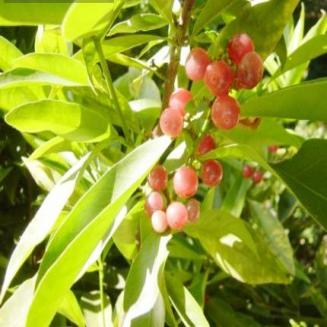SPECIFICATION
English name: Clawflowered laurel.
Description: Small tree, 1-3m. tall or more, much-branched. Leaves opposite, oblong or obovate, entire, coriaceous, glabrous; petiole long. Inflorescence in axillary or terminal corymb; flowers white, fragrant. Drupe globose, obscurely angular, pale-yellow when ripe, edible.
Flowering period: July - September.
Distribution: Grows wild in the midlands and the mountainous regions.
Parts used: The roots, twigs, stem bark and leaves are collected throughout the year. The plants are pulled up, stripped of rootlets, carefully washed and sliced. Selected leaves, not worm-eaten or withered, are sun-dried or heat-dried. The stem bark is used only externally.
Therapeutic uses: The roots are utilized in the therapy of rheumatism, lumbago, pain in the limbs, post-partum blood stasis, furunculosis, impetigo and snake-bite. The dosage is 8 to 20g per day, in the form of a decoction or elixir. The torrefied roots or leaves are effective as a stomachic for dyspepsia in parturients in a daily dose of 6 to 12g as a decoction. A poultice made of heated leaves and a wash with a decoction of the trunk bark are useful for furunculosis and impetigo.
